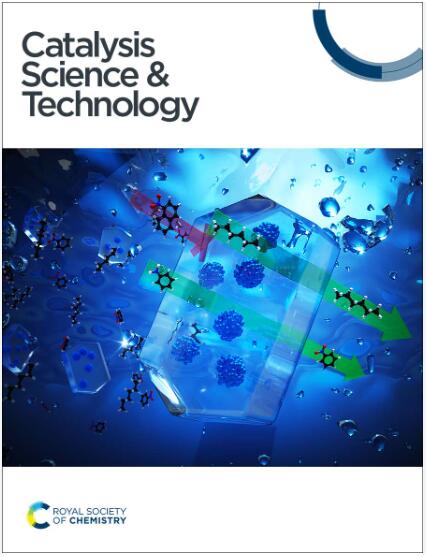Preparation and characterization of a highly dispersed Ru/CeZrO2 catalyst for CO2 methanation with improved activity†
IF 4.4
3区 化学
Q2 CHEMISTRY, PHYSICAL
引用次数: 0
Abstract
CO2 hydrogenation to methane has drawn increasing interest in recent years. Significant efforts are being made to find a catalyst with superior catalytic performance at low temperatures. In this work, a highly dispersed Ru/CeZrO2 catalyst with a Ce/Zr molar ratio of 4/1 was prepared via the decomposition of a ruthenium precursor by energetic species (such as electrons and radicals) from a dielectric barrier discharge (DBD) plasma, operated at about 150 °C. This was followed by thermal hydrogen reduction, resulting in dramatically enhanced activity and stability. For instance, at 275 °C, the methane formation rate on the plasma-decomposed catalyst was found to be about twice that of the catalyst prepared by the thermal decomposition of ruthenium precursor. The plasma-decomposed catalyst exhibited higher dispersion of Ru nanoparticles, enhanced electronic metal–support interactions and improved hydrogen dissociation ability, further facilitating hydrogen spillover from Ru to the surface of CeZrO2 support. Thus, the plasma decomposition caused more surface oxygen vacancies, providing additional adsorption sites for CO2. Analyses via in situ diffuse reflectance infrared Fourier transform spectroscopy revealed that CO2 methanation followed the HCOO* and CO* routes on both catalysts, while the plasma decomposition treatment mainly facilitated catalytic performance at low temperatures by accelerating the formation and consumption of HCOO* in the formate route.

求助全文
约1分钟内获得全文
求助全文
来源期刊

Catalysis Science & Technology
CHEMISTRY, PHYSICAL-
CiteScore
8.70
自引率
6.00%
发文量
587
审稿时长
1.5 months
期刊介绍:
A multidisciplinary journal focusing on cutting edge research across all fundamental science and technological aspects of catalysis.
Editor-in-chief: Bert Weckhuysen
Impact factor: 5.0
Time to first decision (peer reviewed only): 31 days
 求助内容:
求助内容: 应助结果提醒方式:
应助结果提醒方式:


